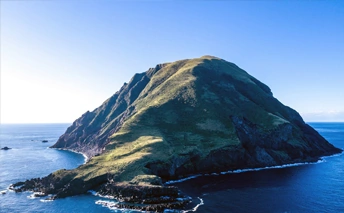Realizing a high-quality disaster simulation that is as close to the experience as possible with "Flood VR" Experiencing disasters without being affected by them saves precious lives
Release:
Update:
NEW
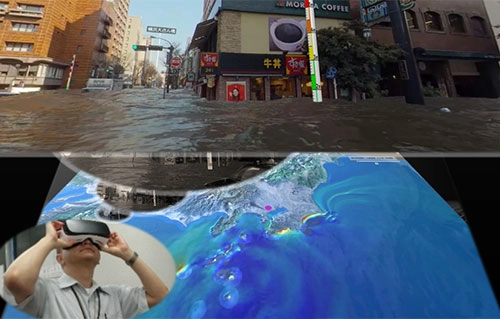
NEEDS
To protect people's lives and livelihoods, we pursue "disaster images linked to experience."
The problem is that even if a large-scale disaster is forecast, it does not lead to evacuation actions, and most people think "It should not come this far" or "Even if it does, the impact will be minimal.” When danger approaches, people will take actions to avoid the crises based on their past experiences. In other words, the decision to evacuate is said to be greatly influenced by the presence or absence of experience.
In order to solve this problem, the whole country has been working on creating "high-quality disaster simulation videos that are as close as possible to the experience" so that many people can experience the disaster. Major landslides and floods, such as those caused by major earthquakes and tsunamis like the Great East Japan Earthquake, do not happen often. Therefore, there has been a demand for safe and realistic disaster simulation images using VR and other technologies.
As a professional in the field of infrastructure and disaster prevention, Nippon Koei has continued to work on the creation of these disaster simulation images for many years. In the past, the results of 3D analysis were displayed on a 2D flat monitor, but with the development of the first VR technology called "immersive video projection technology using large-screen stereoscopic viewing," the analysis results can now be displayed in 3D. This technology was large-scale, enclosing the walls and floors of the room with screens, it required a large space and a huge budget. However, when VR goggles (head-mounted display VR devices) began to be commercially available in 2016, miniaturization accelerated dramatically. Today, we have an environment where people can easily view high-quality 3D images.
Nippon Koei was quick to respond to this series of moves. In particular, tsunami inundation VR continues to receive more inquiries from municipalities facing the sea.
SOLUTION
Inundation VR requires both "3D analysis of inundation" and "high-quality video technology.”
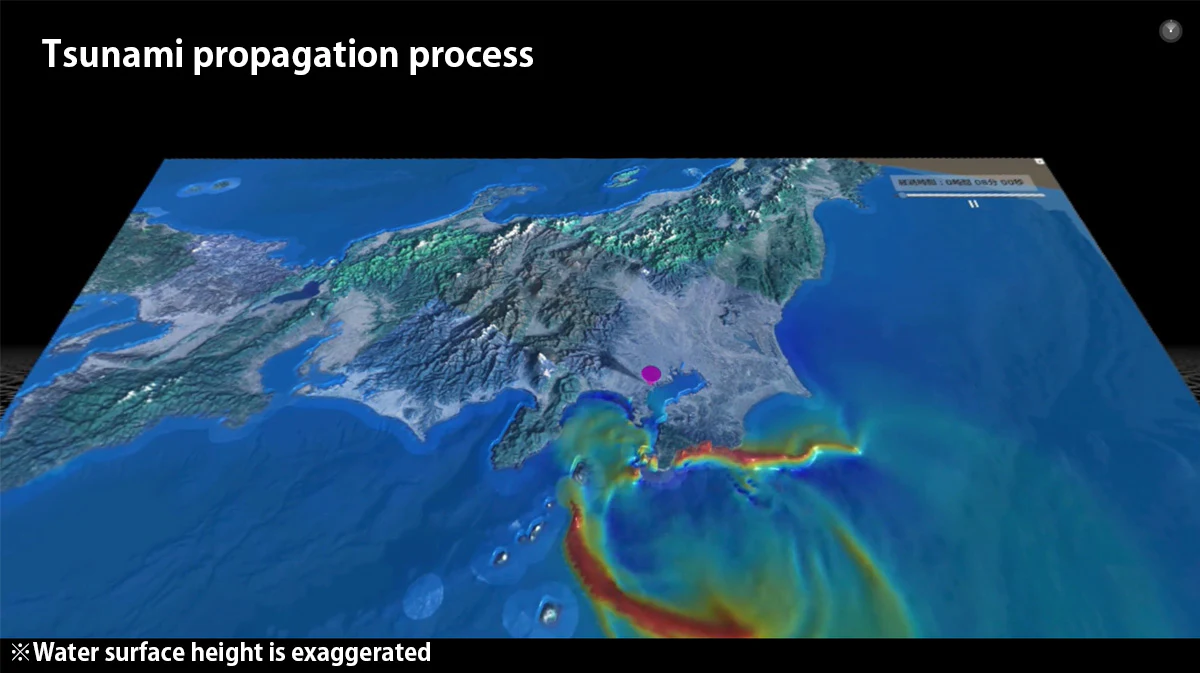
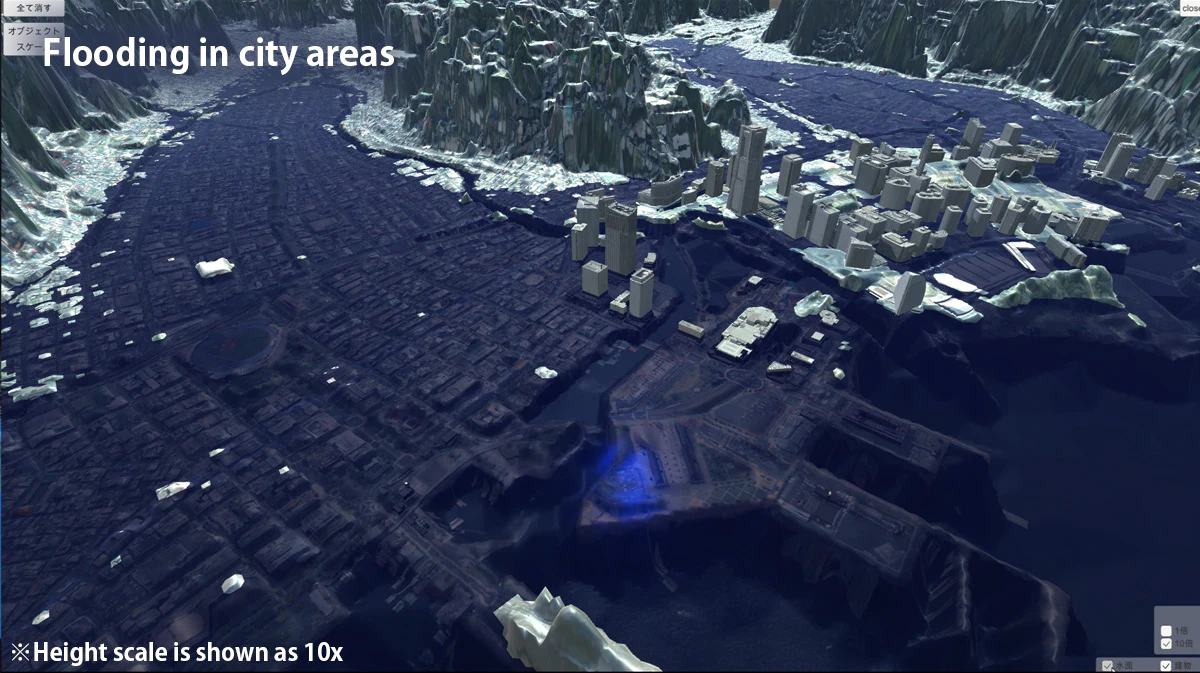
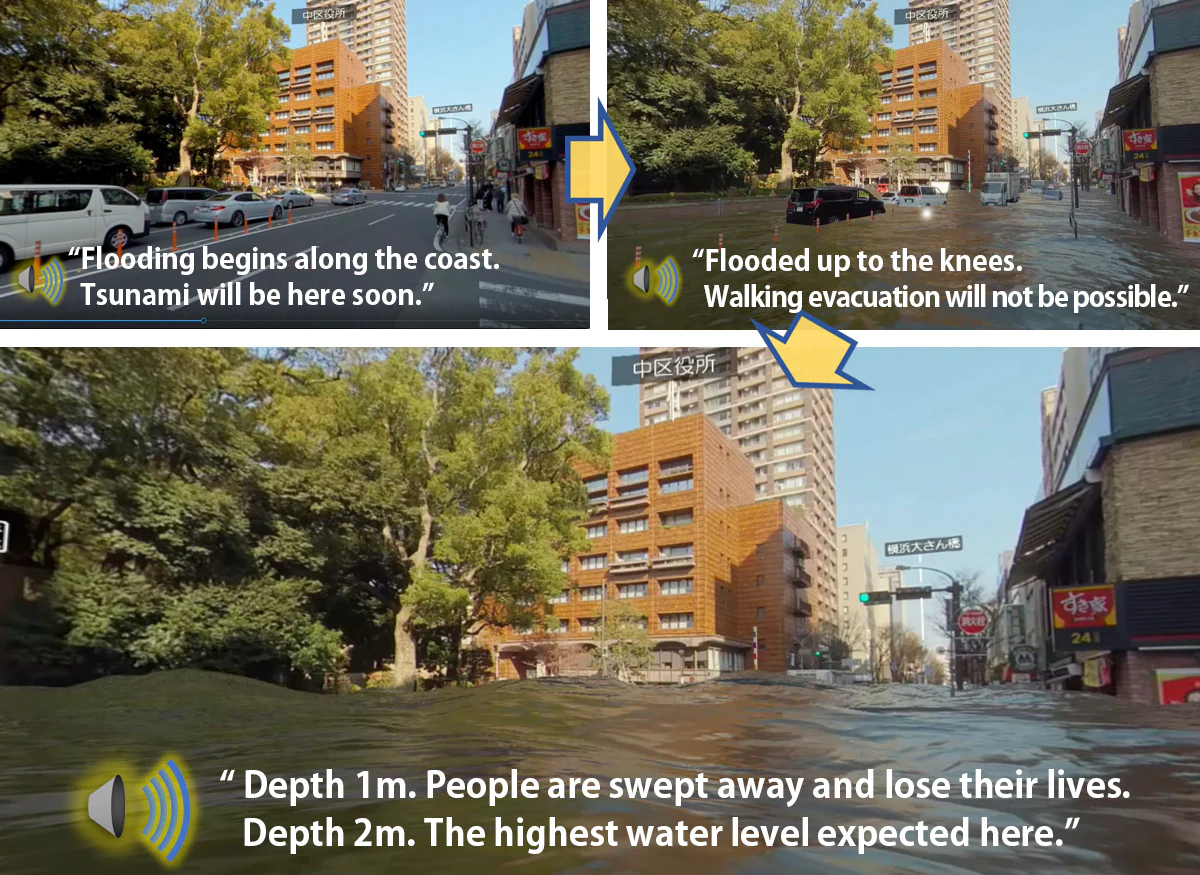
Two major technologies are required to project a city being inundated by a tsunami onto VR goggles. One is the simulation of tsunami inundation. Based on a map containing 3D topographic and facility data, we analyze the route and time of the tsunami from the generated sea area to the city, the depth of inundation in the city, and the speed of the flow. This is a very complex analysis because of the overlap of factors such as elevation differences and buildings. The other is a technique to visualize the results of numerical simulations in combination with 3D live-action images of the location. It is necessary to depict time-related changes in a realistic manner. Generally, IT companies excel in this technology, but since Nippon Koei has a Research & Development Center, we were able to develop our own technology that crosses disaster prevention and VR.
Until now, most of our work has been requested by local governments, but in recent years we have been collaborating with private companies. Examples include the 27th "Earthquake Countermeasures Technology Exhibition" in Yokohama and the 9th "Earthquake Countermeasures Technology Exhibition" in Osaka, which we jointly exhibited with a major non-life insurance company in 2022. In both exhibitions, we displayed the flooded VR of the area concerned and conveyed the necessity of preparation to the visitors.
In the Yokohama exhibition, we assume that an earthquake of magnitude 8.7 will cause a tsunami of the largest class in the center of Yokohama city. It was created on the assumption that the area around Yokohama Stadium and Yokohama Chinatown was flooded with a height of 2m.
In the Osaka exhibition, we simulated the occurrence of a tsunami of the largest scale, which was established by the Osaka Prefectural Disaster Prevention Council's "Nankai Trough Mega-Earthquake Disaster Countermeasures Study Group." We created a 2m-high flood damage around Kyocera Dome Osaka and the nearest JR Taisho Station.
Visitors were uniformly surprised by the realistic VR footage of flooding over time, and we were able to demonstrate the importance of emergency prepardness and evacuations.
POINT
The goal in the near future is to create a total package that includes explanations and expand overseas.
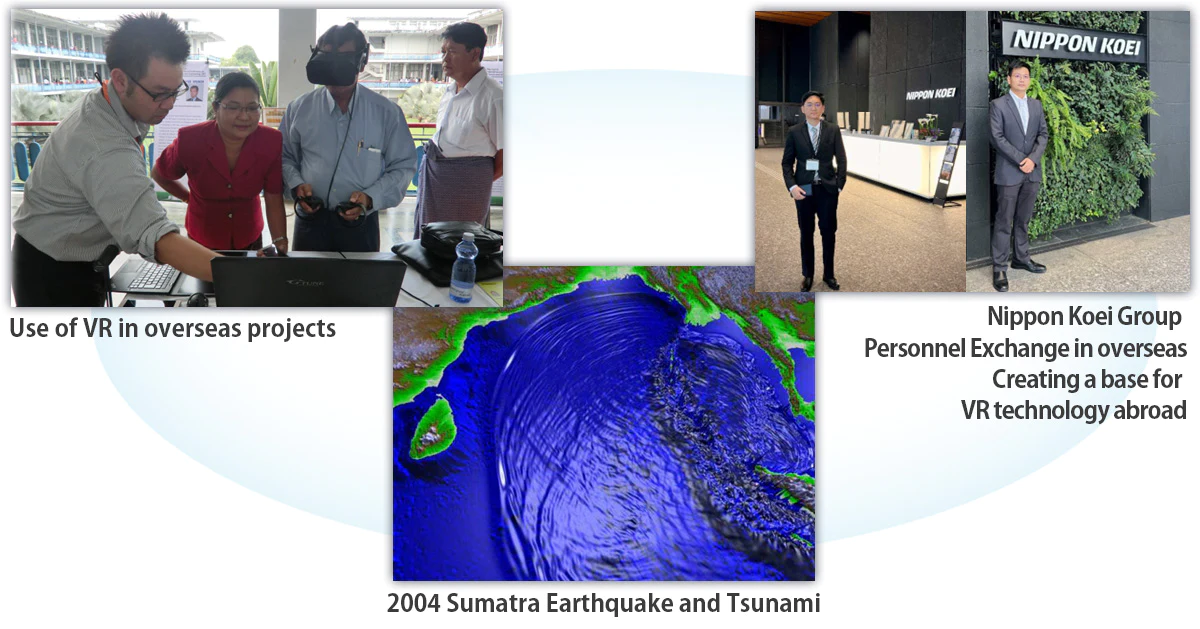
Hardware and software for inundation VR continues to evolve significantly over the years. In terms of hardware, it has become possible to display high-definition images, and it is becoming more compact and cheaper. With regards to software, the basic work of development, which used to take considerable effort, has been simplified, such as the release of 3D map data as open data. Nippon Koei sees these technological advances as an opportunity to provide even more realistic images to a more people. In other words, we can devote more time and budget to "ingenuity" rather than on basic work.
Specifically, inundation VR requires the ability for disaster prevention professionals to provide comment. Until now, inundation VR has been installed mainly in environments such as local government facilities and disaster prevention museums, where explanatory exhibits are arranged side by side. However, there are more and more opportunities for visitors to see VR images before they have a preliminary knowledge, such as the previous exhibitions in Osaka and Yokohama. To further enhance the appeal of VR, we are developing a total package that includes explanations of basic knowledge.
These technologies that combine disaster prevention and VR are not only being used domestically but are beginning to be exported to Southeast Asia and other parts of the world. Nippon Koei is developing businesses such as smart cities, automated driving, and MaaS around the world, but disaster prevention will be even more effective when linked with these urban development technologies.
Nippon Koei will continue to contribute to the creation of a prosperous society as a comprehensive consultant to achieve the world's goal of disaster prevention, "Prevention before disasters can protect the lives and property of many people."
